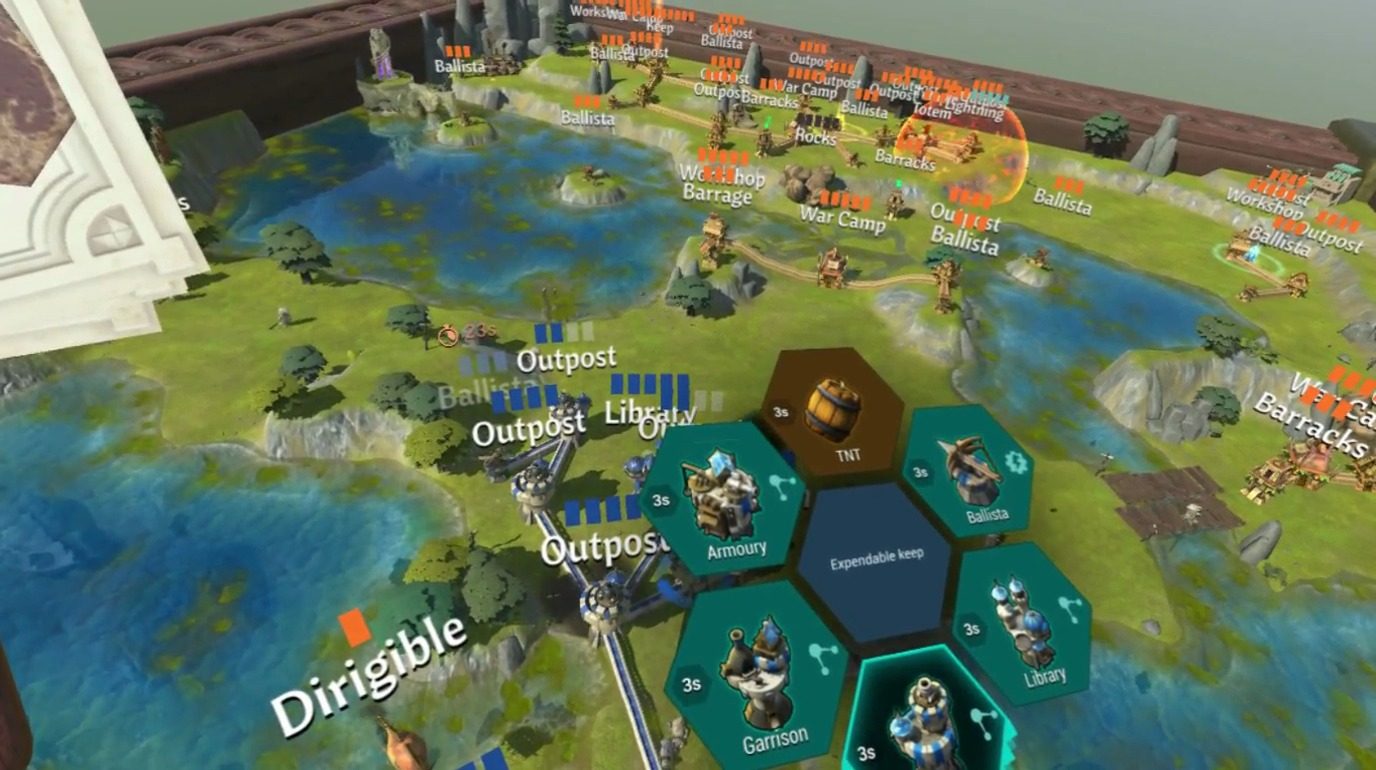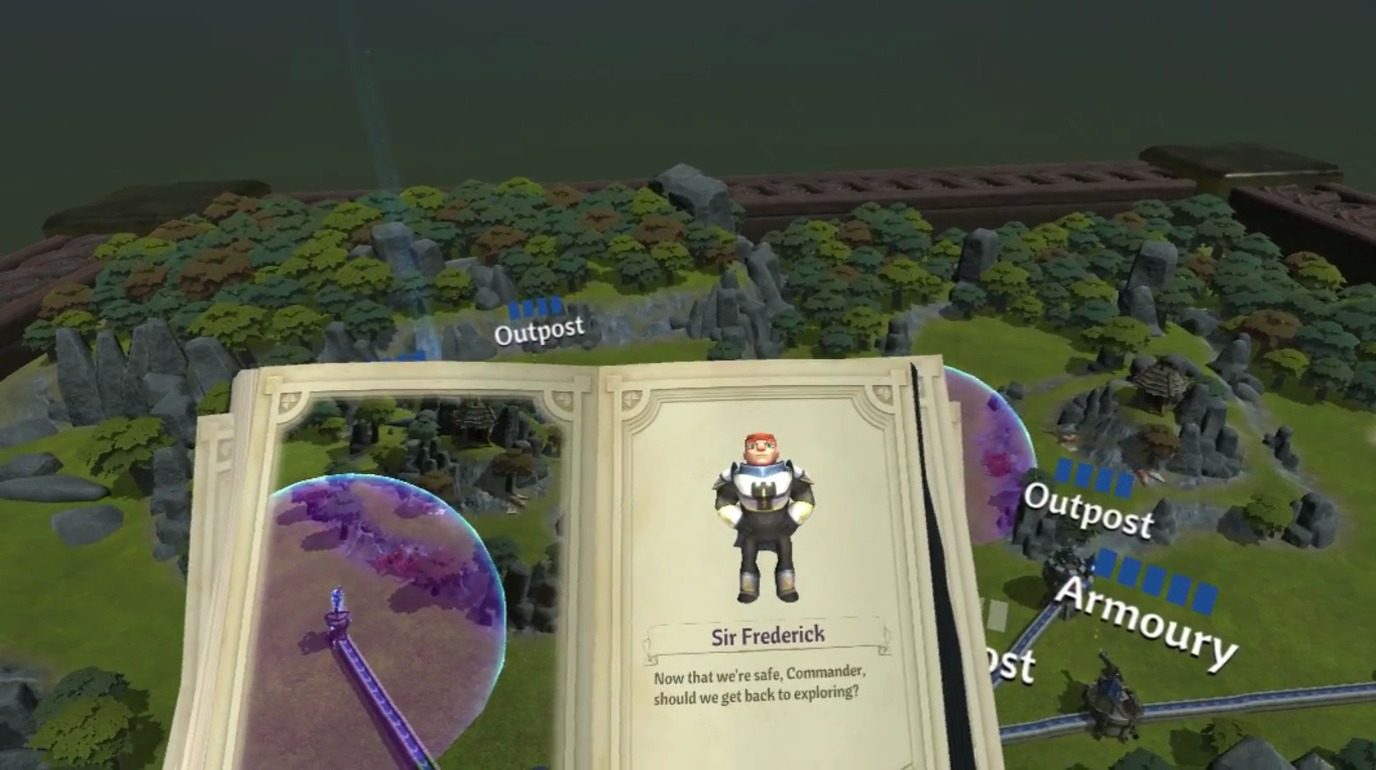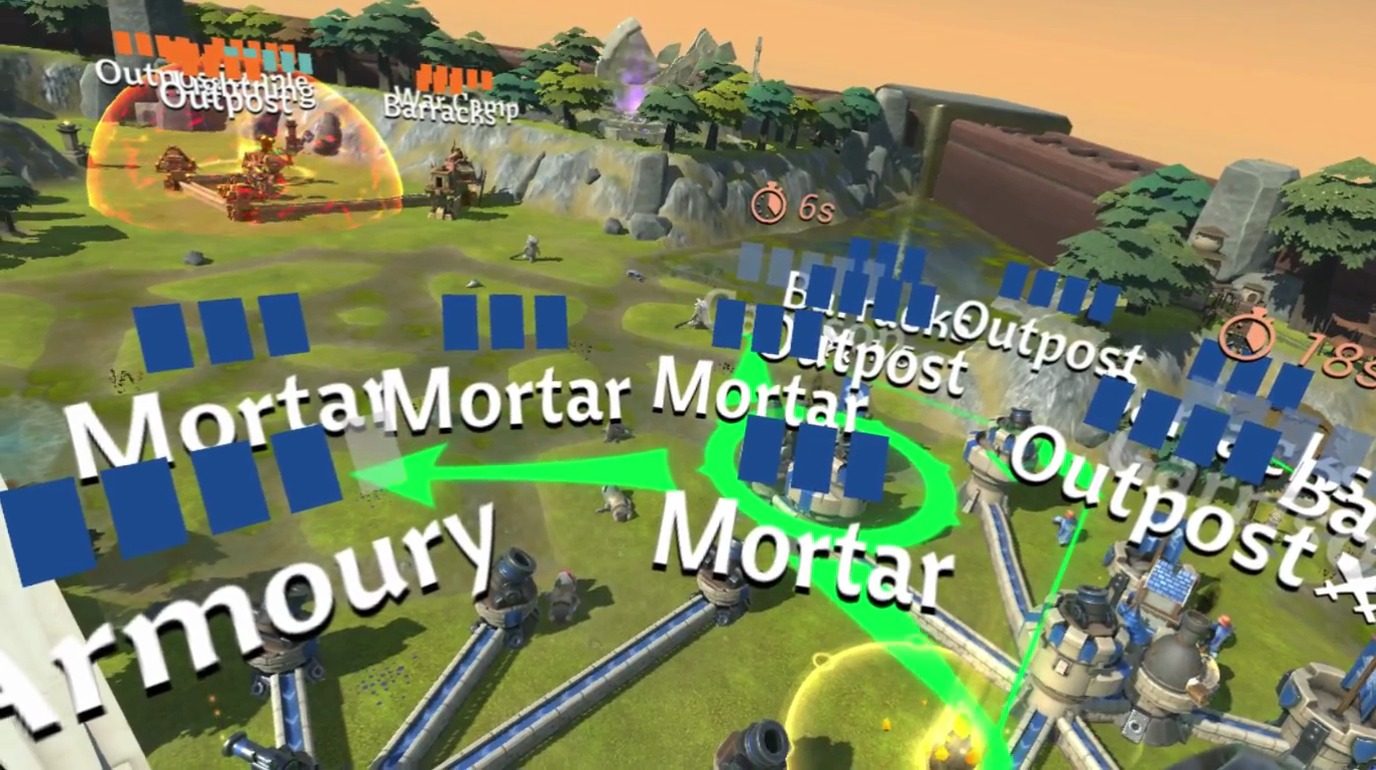Trebuchet, or not to trebuchet? There really is no question when it comes to Siegecraft Commander, a tabletop strategy game that combines traditional real-time strategy (RTS) elements with a unique base-building mechanic that’s designed to significantly change the way you create structures and attack enemies. By making you physically fling—as in, put in a slingshot and shoot out—everything from explosive barrels to defensive buildings like outposts and armories, Siegecraft successfully gameifies the most banal part of traditional RTSs and summarily smothers what might otherwise be a dynamic and interesting game.
Siegecraft Commander Details:
Developer: Blowfish Studios
Available On: SteamVR (HTC Vive, Oculus Rift)
Reviewed on: HTC Vive, Oculus Touch
Release Date: January 17, 2017
Gameplay
In Siegecraft, your base is composed of essentially two main types of buildings that help create a sort of fractal defensive web.
Primary structures: From the heart of your base, called ‘the keep’, you launch outposts, which are essentially self-replicating nodes that allow you to grow your base larger and closer to the enemy. Primary structures are useful for manually destroying the enemy’s keep or any pesky foot soldiers that slip by—accomplished by launching explosive barrels. But more on that later.
[gfycat data_id=”LoathsomeGivingEelelephant”]
Primary structures let you create secondary structures like armories and garrisons, and also some limited defensive structures like land-to-air ballistas. If the enemy knocks out an important node in your primary structure chain though, it destroys everything linked to it from that node forward, effectively undoing a lot of your work.

Secondary structures: After placing a primary structure, you can then have to option to select a number of secondary structures. Placing an armory for example opens up a new branch of the tree, letting you create infantry barracks, and gads of defense structures—all of which are basically dead ends when it comes to growing your base though. Because secondary structures can’t build primary structures, you need to think tactically about how to get past tight terrain, and advance through the map without filling a crucial bottle neck with a library or a mortar when you actually need an outpost to help push forward.
After a successful match, it almost feels like Siegecraft has me creating a sort of primitive intelligence, like a brainless slime mold that eventually takes over a Petri dish bit by bit. And while I really want to like Siegecraft solely based on this self-imagined premise, the activity of physical launching structures is consistently unnerving and just comes too close to ‘unnecessary gimmick’ territory for comfort.
[gfycat data_id=”HardFreshGreathornedowl”]
Sure, launching an explosive barrel at an enemy outpost should rightfully require a keen eye and a good understanding of how the launch mechanic works, but hampering forward progress in the heat of a match because you launched an outpost too close to a rock, or too close to a river, or too close to your own building, or the wall that trails behind it is too close to anything—you begin to ask the most important question of all: Am I having fun yet? Because I’m honestly not sure. I should be worrying about the enemy marching at my gates, and not aiming, pulling back and whiffing my second outpost in a row.
Admittedly, the game is available in two flavors, turn-based and real-time, so you can dial down the chaos if you so choose. While I played the real-time single-player campaign, online multi-player is also available in both flavors, but I wouldn’t risk being matched with anyone using the PC or Xbox/PS4 simply because of the disadvantage of playing in VR. Moving your POV to get a good look at the game board, fiddling with unit selections and physically reaching back to fire every 20 seconds takes both time and patience in VR, something RTS players know is in short supply. Simply put, I found game’s VR mode too encumbered for the all-out chaos of real-time strategy play.
Immersion
The beauty of motion controls in virtual reality reveals itself almost immediately when you try it in a made-for-VR game. Picking up items and interacting with them as if they were actually there is something magical, something that we’ve never been able to do as a species before in the digital realm. Since Siegecraft is more of a VR-mode than a bespoke VR game, both general object interaction and haptics are an absolute afterthought, and there’s certainly no magic to be had using either Vive controller or Oculus Touch (which still renders as the Vive controller in-game).
While you do have a beautiful controller skin and a ever-present book glued to your hand so you can read some of the game’s useless story banter, I can’t help but feel that the game would benefit more from gamepad support—not a damning verdict by any means—and a complete removal of the book in favor of voice overs for campaign mode.
Immersion-wise, finding a comfortable angle to see the gameboard takes time to suss out, because too far away and you can’t accurately select units, and too close… well, you get this:
Instead of sacrificing some of the inherent coolness of a unified color pattern and architecture for the VR mode, the game insists on using labels so I don’t feel lost. The problem is, I feel more lost with the labels on the otherwise beautifully rendered gameboard, truly underlining this as a PC-first, VR-second game.
Comfort
Since Siegecraft Commander doesn’t require room-scale locomotion, and can be played entirely from the seated position if you so wish, users may suffer slightly from manipulating the gameboard too much, as you can grow in size and rotate the board to see better. This sort of world-shifting is known to cause nausea if exaggerated, but Siegecraft offers enough opportunity to rest in between so that little to no discomfort was felt personally.
You may also be temped to look down at the board to get a good bird’s eye view most of the time, but keeping your neck pointed downwards with a VR headset can be a big pain in the neck after a while if you’re not careful.









